-
EXECUTIVE SUMMARY
-
Market Overview
-
Key Findings
-
Market Segmentation
-
Competitive Landscape
-
Challenges and Opportunities
-
1.6.
-
Future Outlook
-
\r\n
-
MARKET INTRODUCTION
-
2.1.
-
Definition
-
Scope of the study
- Research Objective
- Limitations
-
2.2.2.
-
Assumption
-
RESEARCH METHODOLOGY
-
Overview
-
Data Mining
-
Secondary Research
-
Primary Research
- Primary Interviews and Information Gathering Process
- Breakdown
-
of Primary Respondents
-
Forecasting Model
-
Market Size Estimation
- Bottom-Up Approach
- Top-Down Approach
-
Data Triangulation
-
Validation
-
\r\n
-
MARKET DYNAMICS
-
Overview
-
Drivers
-
Restraints
-
Opportunities
-
MARKET
-
FACTOR ANALYSIS
-
Value chain Analysis
-
Porter's Five Forces
- Bargaining Power of Suppliers
- Bargaining Power
- Threat of New Entrants
- Threat of Substitutes
- Intensity of Rivalry
-
Analysis
-
of Buyers
-
COVID-19 Impact Analysis
- Regional Impact
- Opportunity and
-
5.3.1.
-
Market Impact Analysis
-
Threat Analysis
-
\r\n
-
AUTOMOTIVE BEARING MARKET, BY TYPE (USD
-
BILLION)
-
Ball Bearings
-
Roller Bearings
-
Thrust Bearings
-
Plain Bearings
-
AUTOMOTIVE BEARING MARKET, BY APPLICATION (USD
-
BILLION)
-
Passenger Vehicles
-
Commercial Vehicles
-
7.3.
-
Two-Wheelers
-
Heavy-Duty Vehicles
-
AUTOMOTIVE BEARING MARKET,
-
BY MATERIAL (USD BILLION)
-
Steel
-
Ceramic
-
Polymer
-
Composites
-
AUTOMOTIVE BEARING MARKET, BY END USE (USD BILLION)
-
OEM
-
Aftermarket
-
AUTOMOTIVE BEARING MARKET, BY REGIONAL
-
(USD BILLION)
-
North America
- US
- Canada
-
Europe
- Germany
- UK
- France
- Italy
- Spain
- Rest of Europe
-
10.2.4.
-
Russia
-
APAC
- China
- India
- Japan
- Malaysia
- Thailand
- Indonesia
- Rest of APAC
-
10.3.4.
-
South Korea
-
South America
- Brazil
- Argentina
- Rest of South America
-
10.4.2.
-
Mexico
-
MEA
- GCC Countries
- South Africa
- Rest of MEA
-
\r\n
-
COMPETITIVE LANDSCAPE
-
Overview
-
Competitive Analysis
-
Market share Analysis
-
Major Growth Strategy in the Automotive
-
Bearing Market
-
Competitive Benchmarking
-
Leading Players
- New Product Launch/Service
- Merger & Acquisitions
- Joint Ventures
-
in Terms of Number of Developments in the Automotive Bearing Market
-
11.7.
-
Key developments and growth strategies
-
Deployment
-
Major Players Financial Matrix
- Sales and Operating Income
- Major Players R&D Expenditure. 2023
-
COMPANY PROFILES
-
Boca Bearings
- Financial Overview
- Products
- Key Developments
- SWOT Analysis
-
Offered
-
12.1.5.
-
Key Strategies
-
JTEKT Corporation
- Financial Overview
- Products Offered
- Key Developments
- SWOT Analysis
- Key Strategies
-
Koyo Seiko
- Financial Overview
- Products Offered
- Key Developments
- SWOT
- Key Strategies
-
Analysis
-
RBC Bearings
- Financial
- Products Offered
- Key Developments
- Key Strategies
-
Overview
-
12.4.4.
-
SWOT Analysis
-
Hubei DHI
- Financial
- Products Offered
- Key Developments
- Key Strategies
-
Overview
-
12.5.4.
-
SWOT Analysis
-
HAROLD
- Financial
- Products Offered
- Key Developments
- Key Strategies
-
Overview
-
12.6.4.
-
SWOT Analysis
-
C&U Group
- Products Offered
- Key Developments
- SWOT Analysis
- Key Strategies
-
12.7.1.
-
Financial Overview
-
FAG
- Products Offered
- Key Developments
- SWOT Analysis
- Key Strategies
-
12.8.1.
-
Financial Overview
-
Schaeffler
- Financial Overview
- Products Offered
- Key
- SWOT Analysis
- Key Strategies
- Financial Overview
- Products Offered
- Key Developments
- SWOT Analysis
- Key
-
Developments
-
12.10.
-
NTN Corporation
-
Strategies
-
NSK Ltd
- Financial Overview
- Key Developments
- SWOT Analysis
- Key Strategies
-
12.11.2.
-
Products Offered
-
ZKL
- Financial Overview
- Products Offered
- Key Developments
- SWOT
- Key Strategies
-
Analysis
-
SKF
- Financial
- Products Offered
- Key Developments
- Key Strategies
-
Overview
-
12.13.4.
-
SWOT Analysis
-
Timken
- Financial
- Products Offered
- Key Developments
- Key Strategies
-
Overview
-
12.14.4.
-
SWOT Analysis
-
SNL Bearings
- Products Offered
- Key Developments
- SWOT Analysis
- Key Strategies
-
12.15.1.
-
Financial Overview
-
APPENDIX
-
References
-
Related Reports
-
LIST OF TABLES
-
\r\nTABLE
-
LIST OF ASSUMPTIONS
-
NORTH AMERICA AUTOMOTIVE BEARING MARKET SIZE
-
ESTIMATES & FORECAST, BY TYPE, 2019-2035 (USD BILLIONS)
-
NORTH
-
AMERICA AUTOMOTIVE BEARING MARKET SIZE ESTIMATES & FORECAST, BY APPLICATION,
-
NORTH AMERICA AUTOMOTIVE BEARING MARKET
-
SIZE ESTIMATES & FORECAST, BY MATERIAL, 2019-2035 (USD BILLIONS)
-
TABLE
-
NORTH AMERICA AUTOMOTIVE BEARING MARKET SIZE ESTIMATES & FORECAST, BY END
-
USE, 2019-2035 (USD BILLIONS)
-
NORTH AMERICA AUTOMOTIVE BEARING MARKET
-
SIZE ESTIMATES & FORECAST, BY REGIONAL, 2019-2035 (USD BILLIONS)
-
TABLE
-
US AUTOMOTIVE BEARING MARKET SIZE ESTIMATES & FORECAST, BY TYPE, 2019-2035
-
(USD BILLIONS)
-
US AUTOMOTIVE BEARING MARKET SIZE ESTIMATES &
-
FORECAST, BY APPLICATION, 2019-2035 (USD BILLIONS)
-
US AUTOMOTIVE
-
BEARING MARKET SIZE ESTIMATES & FORECAST, BY MATERIAL, 2019-2035 (USD BILLIONS)
-
US AUTOMOTIVE BEARING MARKET SIZE ESTIMATES & FORECAST, BY END
-
USE, 2019-2035 (USD BILLIONS)
-
US AUTOMOTIVE BEARING MARKET SIZE
-
ESTIMATES & FORECAST, BY REGIONAL, 2019-2035 (USD BILLIONS)
-
TABLE 12.
-
CANADA AUTOMOTIVE BEARING MARKET SIZE ESTIMATES & FORECAST, BY TYPE, 2019-2035
-
(USD BILLIONS)
-
CANADA AUTOMOTIVE BEARING MARKET SIZE ESTIMATES &
-
FORECAST, BY APPLICATION, 2019-2035 (USD BILLIONS)
-
CANADA AUTOMOTIVE
-
BEARING MARKET SIZE ESTIMATES & FORECAST, BY MATERIAL, 2019-2035 (USD BILLIONS)
-
CANADA AUTOMOTIVE BEARING MARKET SIZE ESTIMATES & FORECAST,
-
BY END USE, 2019-2035 (USD BILLIONS)
-
CANADA AUTOMOTIVE BEARING MARKET
-
SIZE ESTIMATES & FORECAST, BY REGIONAL, 2019-2035 (USD BILLIONS)
-
TABLE
-
EUROPE AUTOMOTIVE BEARING MARKET SIZE ESTIMATES & FORECAST, BY TYPE, 2019-2035
-
(USD BILLIONS)
-
EUROPE AUTOMOTIVE BEARING MARKET SIZE ESTIMATES &
-
FORECAST, BY APPLICATION, 2019-2035 (USD BILLIONS)
-
EUROPE AUTOMOTIVE
-
BEARING MARKET SIZE ESTIMATES & FORECAST, BY MATERIAL, 2019-2035 (USD BILLIONS)
-
EUROPE AUTOMOTIVE BEARING MARKET SIZE ESTIMATES & FORECAST,
-
BY END USE, 2019-2035 (USD BILLIONS)
-
EUROPE AUTOMOTIVE BEARING MARKET
-
SIZE ESTIMATES & FORECAST, BY REGIONAL, 2019-2035 (USD BILLIONS)
-
TABLE
-
GERMANY AUTOMOTIVE BEARING MARKET SIZE ESTIMATES & FORECAST, BY TYPE, 2019-2035
-
(USD BILLIONS)
-
GERMANY AUTOMOTIVE BEARING MARKET SIZE ESTIMATES
-
& FORECAST, BY APPLICATION, 2019-2035 (USD BILLIONS)
-
GERMANY
-
AUTOMOTIVE BEARING MARKET SIZE ESTIMATES & FORECAST, BY MATERIAL, 2019-2035
-
(USD BILLIONS)
-
GERMANY AUTOMOTIVE BEARING MARKET SIZE ESTIMATES
-
& FORECAST, BY END USE, 2019-2035 (USD BILLIONS)
-
GERMANY AUTOMOTIVE
-
BEARING MARKET SIZE ESTIMATES & FORECAST, BY REGIONAL, 2019-2035 (USD BILLIONS)
-
UK AUTOMOTIVE BEARING MARKET SIZE ESTIMATES & FORECAST, BY TYPE,
-
UK AUTOMOTIVE BEARING MARKET SIZE ESTIMATES
-
& FORECAST, BY APPLICATION, 2019-2035 (USD BILLIONS)
-
UK AUTOMOTIVE
-
BEARING MARKET SIZE ESTIMATES & FORECAST, BY MATERIAL, 2019-2035 (USD BILLIONS)
-
UK AUTOMOTIVE BEARING MARKET SIZE ESTIMATES & FORECAST, BY END
-
USE, 2019-2035 (USD BILLIONS)
-
UK AUTOMOTIVE BEARING MARKET SIZE
-
ESTIMATES & FORECAST, BY REGIONAL, 2019-2035 (USD BILLIONS)
-
TABLE 32.
-
FRANCE AUTOMOTIVE BEARING MARKET SIZE ESTIMATES & FORECAST, BY TYPE, 2019-2035
-
(USD BILLIONS)
-
FRANCE AUTOMOTIVE BEARING MARKET SIZE ESTIMATES &
-
FORECAST, BY APPLICATION, 2019-2035 (USD BILLIONS)
-
FRANCE AUTOMOTIVE
-
BEARING MARKET SIZE ESTIMATES & FORECAST, BY MATERIAL, 2019-2035 (USD BILLIONS)
-
FRANCE AUTOMOTIVE BEARING MARKET SIZE ESTIMATES & FORECAST,
-
BY END USE, 2019-2035 (USD BILLIONS)
-
FRANCE AUTOMOTIVE BEARING MARKET
-
SIZE ESTIMATES & FORECAST, BY REGIONAL, 2019-2035 (USD BILLIONS)
-
TABLE
-
RUSSIA AUTOMOTIVE BEARING MARKET SIZE ESTIMATES & FORECAST, BY TYPE, 2019-2035
-
(USD BILLIONS)
-
RUSSIA AUTOMOTIVE BEARING MARKET SIZE ESTIMATES &
-
FORECAST, BY APPLICATION, 2019-2035 (USD BILLIONS)
-
RUSSIA AUTOMOTIVE
-
BEARING MARKET SIZE ESTIMATES & FORECAST, BY MATERIAL, 2019-2035 (USD BILLIONS)
-
RUSSIA AUTOMOTIVE BEARING MARKET SIZE ESTIMATES & FORECAST,
-
BY END USE, 2019-2035 (USD BILLIONS)
-
RUSSIA AUTOMOTIVE BEARING MARKET
-
SIZE ESTIMATES & FORECAST, BY REGIONAL, 2019-2035 (USD BILLIONS)
-
TABLE
-
ITALY AUTOMOTIVE BEARING MARKET SIZE ESTIMATES & FORECAST, BY TYPE, 2019-2035
-
(USD BILLIONS)
-
ITALY AUTOMOTIVE BEARING MARKET SIZE ESTIMATES &
-
FORECAST, BY APPLICATION, 2019-2035 (USD BILLIONS)
-
ITALY AUTOMOTIVE
-
BEARING MARKET SIZE ESTIMATES & FORECAST, BY MATERIAL, 2019-2035 (USD BILLIONS)
-
ITALY AUTOMOTIVE BEARING MARKET SIZE ESTIMATES & FORECAST, BY
-
END USE, 2019-2035 (USD BILLIONS)
-
ITALY AUTOMOTIVE BEARING MARKET
-
SIZE ESTIMATES & FORECAST, BY REGIONAL, 2019-2035 (USD BILLIONS)
-
TABLE
-
SPAIN AUTOMOTIVE BEARING MARKET SIZE ESTIMATES & FORECAST, BY TYPE, 2019-2035
-
(USD BILLIONS)
-
SPAIN AUTOMOTIVE BEARING MARKET SIZE ESTIMATES &
-
FORECAST, BY APPLICATION, 2019-2035 (USD BILLIONS)
-
SPAIN AUTOMOTIVE
-
BEARING MARKET SIZE ESTIMATES & FORECAST, BY MATERIAL, 2019-2035 (USD BILLIONS)
-
SPAIN AUTOMOTIVE BEARING MARKET SIZE ESTIMATES & FORECAST, BY
-
END USE, 2019-2035 (USD BILLIONS)
-
SPAIN AUTOMOTIVE BEARING MARKET
-
SIZE ESTIMATES & FORECAST, BY REGIONAL, 2019-2035 (USD BILLIONS)
-
TABLE
-
REST OF EUROPE AUTOMOTIVE BEARING MARKET SIZE ESTIMATES & FORECAST, BY TYPE,
-
REST OF EUROPE AUTOMOTIVE BEARING MARKET
-
SIZE ESTIMATES & FORECAST, BY APPLICATION, 2019-2035 (USD BILLIONS)
-
TABLE
-
REST OF EUROPE AUTOMOTIVE BEARING MARKET SIZE ESTIMATES & FORECAST, BY MATERIAL,
-
REST OF EUROPE AUTOMOTIVE BEARING MARKET
-
SIZE ESTIMATES & FORECAST, BY END USE, 2019-2035 (USD BILLIONS)
-
TABLE
-
REST OF EUROPE AUTOMOTIVE BEARING MARKET SIZE ESTIMATES & FORECAST, BY REGIONAL,
-
APAC AUTOMOTIVE BEARING MARKET SIZE ESTIMATES
-
& FORECAST, BY TYPE, 2019-2035 (USD BILLIONS)
-
APAC AUTOMOTIVE
-
BEARING MARKET SIZE ESTIMATES & FORECAST, BY APPLICATION, 2019-2035 (USD BILLIONS)
-
APAC AUTOMOTIVE BEARING MARKET SIZE ESTIMATES & FORECAST, BY
-
MATERIAL, 2019-2035 (USD BILLIONS)
-
APAC AUTOMOTIVE BEARING MARKET
-
SIZE ESTIMATES & FORECAST, BY END USE, 2019-2035 (USD BILLIONS)
-
TABLE
-
APAC AUTOMOTIVE BEARING MARKET SIZE ESTIMATES & FORECAST, BY REGIONAL, 2019-2035
-
(USD BILLIONS)
-
CHINA AUTOMOTIVE BEARING MARKET SIZE ESTIMATES &
-
FORECAST, BY TYPE, 2019-2035 (USD BILLIONS)
-
CHINA AUTOMOTIVE BEARING
-
MARKET SIZE ESTIMATES & FORECAST, BY APPLICATION, 2019-2035 (USD BILLIONS)
-
CHINA AUTOMOTIVE BEARING MARKET SIZE ESTIMATES & FORECAST, BY MATERIAL,
-
CHINA AUTOMOTIVE BEARING MARKET SIZE ESTIMATES
-
& FORECAST, BY END USE, 2019-2035 (USD BILLIONS)
-
CHINA AUTOMOTIVE
-
BEARING MARKET SIZE ESTIMATES & FORECAST, BY REGIONAL, 2019-2035 (USD BILLIONS)
-
INDIA AUTOMOTIVE BEARING MARKET SIZE ESTIMATES & FORECAST, BY
-
TYPE, 2019-2035 (USD BILLIONS)
-
INDIA AUTOMOTIVE BEARING MARKET SIZE
-
ESTIMATES & FORECAST, BY APPLICATION, 2019-2035 (USD BILLIONS)
-
TABLE 69.
-
INDIA AUTOMOTIVE BEARING MARKET SIZE ESTIMATES & FORECAST, BY MATERIAL, 2019-2035
-
(USD BILLIONS)
-
INDIA AUTOMOTIVE BEARING MARKET SIZE ESTIMATES &
-
FORECAST, BY END USE, 2019-2035 (USD BILLIONS)
-
INDIA AUTOMOTIVE
-
BEARING MARKET SIZE ESTIMATES & FORECAST, BY REGIONAL, 2019-2035 (USD BILLIONS)
-
JAPAN AUTOMOTIVE BEARING MARKET SIZE ESTIMATES & FORECAST, BY
-
TYPE, 2019-2035 (USD BILLIONS)
-
JAPAN AUTOMOTIVE BEARING MARKET SIZE
-
ESTIMATES & FORECAST, BY APPLICATION, 2019-2035 (USD BILLIONS)
-
TABLE 74.
-
JAPAN AUTOMOTIVE BEARING MARKET SIZE ESTIMATES & FORECAST, BY MATERIAL, 2019-2035
-
(USD BILLIONS)
-
JAPAN AUTOMOTIVE BEARING MARKET SIZE ESTIMATES &
-
FORECAST, BY END USE, 2019-2035 (USD BILLIONS)
-
JAPAN AUTOMOTIVE
-
BEARING MARKET SIZE ESTIMATES & FORECAST, BY REGIONAL, 2019-2035 (USD BILLIONS)
-
SOUTH KOREA AUTOMOTIVE BEARING MARKET SIZE ESTIMATES & FORECAST,
-
BY TYPE, 2019-2035 (USD BILLIONS)
-
SOUTH KOREA AUTOMOTIVE BEARING
-
MARKET SIZE ESTIMATES & FORECAST, BY APPLICATION, 2019-2035 (USD BILLIONS)
-
SOUTH KOREA AUTOMOTIVE BEARING MARKET SIZE ESTIMATES & FORECAST,
-
BY MATERIAL, 2019-2035 (USD BILLIONS)
-
SOUTH KOREA AUTOMOTIVE BEARING
-
MARKET SIZE ESTIMATES & FORECAST, BY END USE, 2019-2035 (USD BILLIONS)
-
TABLE
-
SOUTH KOREA AUTOMOTIVE BEARING MARKET SIZE ESTIMATES & FORECAST, BY REGIONAL,
-
MALAYSIA AUTOMOTIVE BEARING MARKET SIZE
-
ESTIMATES & FORECAST, BY TYPE, 2019-2035 (USD BILLIONS)
-
MALAYSIA
-
AUTOMOTIVE BEARING MARKET SIZE ESTIMATES & FORECAST, BY APPLICATION, 2019-2035
-
(USD BILLIONS)
-
MALAYSIA AUTOMOTIVE BEARING MARKET SIZE ESTIMATES
-
& FORECAST, BY MATERIAL, 2019-2035 (USD BILLIONS)
-
MALAYSIA AUTOMOTIVE
-
BEARING MARKET SIZE ESTIMATES & FORECAST, BY END USE, 2019-2035 (USD BILLIONS)
-
MALAYSIA AUTOMOTIVE BEARING MARKET SIZE ESTIMATES & FORECAST,
-
BY REGIONAL, 2019-2035 (USD BILLIONS)
-
THAILAND AUTOMOTIVE BEARING
-
MARKET SIZE ESTIMATES & FORECAST, BY TYPE, 2019-2035 (USD BILLIONS)
-
TABLE
-
THAILAND AUTOMOTIVE BEARING MARKET SIZE ESTIMATES & FORECAST, BY APPLICATION,
-
THAILAND AUTOMOTIVE BEARING MARKET SIZE
-
ESTIMATES & FORECAST, BY MATERIAL, 2019-2035 (USD BILLIONS)
-
TABLE 90.
-
THAILAND AUTOMOTIVE BEARING MARKET SIZE ESTIMATES & FORECAST, BY END USE, 2019-2035
-
(USD BILLIONS)
-
THAILAND AUTOMOTIVE BEARING MARKET SIZE ESTIMATES
-
& FORECAST, BY REGIONAL, 2019-2035 (USD BILLIONS)
-
INDONESIA
-
AUTOMOTIVE BEARING MARKET SIZE ESTIMATES & FORECAST, BY TYPE, 2019-2035 (USD
-
BILLIONS)
-
INDONESIA AUTOMOTIVE BEARING MARKET SIZE ESTIMATES &
-
FORECAST, BY APPLICATION, 2019-2035 (USD BILLIONS)
-
INDONESIA AUTOMOTIVE
-
BEARING MARKET SIZE ESTIMATES & FORECAST, BY MATERIAL, 2019-2035 (USD BILLIONS)
-
INDONESIA AUTOMOTIVE BEARING MARKET SIZE ESTIMATES & FORECAST,
-
BY END USE, 2019-2035 (USD BILLIONS)
-
INDONESIA AUTOMOTIVE BEARING
-
MARKET SIZE ESTIMATES & FORECAST, BY REGIONAL, 2019-2035 (USD BILLIONS)
-
REST OF APAC AUTOMOTIVE BEARING MARKET SIZE ESTIMATES & FORECAST,
-
BY TYPE, 2019-2035 (USD BILLIONS)
-
REST OF APAC AUTOMOTIVE BEARING
-
MARKET SIZE ESTIMATES & FORECAST, BY APPLICATION, 2019-2035 (USD BILLIONS)
-
REST OF APAC AUTOMOTIVE BEARING MARKET SIZE ESTIMATES & FORECAST,
-
BY MATERIAL, 2019-2035 (USD BILLIONS)
-
REST OF APAC AUTOMOTIVE BEARING
-
MARKET SIZE ESTIMATES & FORECAST, BY END USE, 2019-2035 (USD BILLIONS)
-
TABLE
-
REST OF APAC AUTOMOTIVE BEARING MARKET SIZE ESTIMATES & FORECAST, BY REGIONAL,
-
SOUTH AMERICA AUTOMOTIVE BEARING MARKET
-
SIZE ESTIMATES & FORECAST, BY TYPE, 2019-2035 (USD BILLIONS)
-
TABLE 103.
-
SOUTH AMERICA AUTOMOTIVE BEARING MARKET SIZE ESTIMATES & FORECAST, BY APPLICATION,
-
SOUTH AMERICA AUTOMOTIVE BEARING MARKET
-
SIZE ESTIMATES & FORECAST, BY MATERIAL, 2019-2035 (USD BILLIONS)
-
TABLE
-
SOUTH AMERICA AUTOMOTIVE BEARING MARKET SIZE ESTIMATES & FORECAST, BY END
-
USE, 2019-2035 (USD BILLIONS)
-
SOUTH AMERICA AUTOMOTIVE BEARING
-
MARKET SIZE ESTIMATES & FORECAST, BY REGIONAL, 2019-2035 (USD BILLIONS)
-
BRAZIL AUTOMOTIVE BEARING MARKET SIZE ESTIMATES & FORECAST, BY
-
TYPE, 2019-2035 (USD BILLIONS)
-
BRAZIL AUTOMOTIVE BEARING MARKET
-
SIZE ESTIMATES & FORECAST, BY APPLICATION, 2019-2035 (USD BILLIONS)
-
TABLE
-
BRAZIL AUTOMOTIVE BEARING MARKET SIZE ESTIMATES & FORECAST, BY MATERIAL,
-
BRAZIL AUTOMOTIVE BEARING MARKET SIZE
-
ESTIMATES & FORECAST, BY END USE, 2019-2035 (USD BILLIONS)
-
TABLE 111.
-
BRAZIL AUTOMOTIVE BEARING MARKET SIZE ESTIMATES & FORECAST, BY REGIONAL, 2019-2035
-
(USD BILLIONS)
-
MEXICO AUTOMOTIVE BEARING MARKET SIZE ESTIMATES
-
& FORECAST, BY TYPE, 2019-2035 (USD BILLIONS)
-
MEXICO AUTOMOTIVE
-
BEARING MARKET SIZE ESTIMATES & FORECAST, BY APPLICATION, 2019-2035 (USD BILLIONS)
-
MEXICO AUTOMOTIVE BEARING MARKET SIZE ESTIMATES & FORECAST,
-
BY MATERIAL, 2019-2035 (USD BILLIONS)
-
MEXICO AUTOMOTIVE BEARING
-
MARKET SIZE ESTIMATES & FORECAST, BY END USE, 2019-2035 (USD BILLIONS)
-
TABLE
-
MEXICO AUTOMOTIVE BEARING MARKET SIZE ESTIMATES & FORECAST, BY REGIONAL,
-
ARGENTINA AUTOMOTIVE BEARING MARKET SIZE
-
ESTIMATES & FORECAST, BY TYPE, 2019-2035 (USD BILLIONS)
-
ARGENTINA
-
AUTOMOTIVE BEARING MARKET SIZE ESTIMATES & FORECAST, BY APPLICATION, 2019-2035
-
(USD BILLIONS)
-
ARGENTINA AUTOMOTIVE BEARING MARKET SIZE ESTIMATES
-
& FORECAST, BY MATERIAL, 2019-2035 (USD BILLIONS)
-
ARGENTINA
-
AUTOMOTIVE BEARING MARKET SIZE ESTIMATES & FORECAST, BY END USE, 2019-2035 (USD
-
BILLIONS)
-
ARGENTINA AUTOMOTIVE BEARING MARKET SIZE ESTIMATES &
-
FORECAST, BY REGIONAL, 2019-2035 (USD BILLIONS)
-
REST OF SOUTH AMERICA
-
AUTOMOTIVE BEARING MARKET SIZE ESTIMATES & FORECAST, BY TYPE, 2019-2035 (USD
-
BILLIONS)
-
REST OF SOUTH AMERICA AUTOMOTIVE BEARING MARKET SIZE
-
ESTIMATES & FORECAST, BY APPLICATION, 2019-2035 (USD BILLIONS)
-
TABLE 124.
-
REST OF SOUTH AMERICA AUTOMOTIVE BEARING MARKET SIZE ESTIMATES & FORECAST, BY
-
MATERIAL, 2019-2035 (USD BILLIONS)
-
REST OF SOUTH AMERICA AUTOMOTIVE
-
BEARING MARKET SIZE ESTIMATES & FORECAST, BY END USE, 2019-2035 (USD BILLIONS)
-
REST OF SOUTH AMERICA AUTOMOTIVE BEARING MARKET SIZE ESTIMATES
-
& FORECAST, BY REGIONAL, 2019-2035 (USD BILLIONS)
-
MEA AUTOMOTIVE
-
BEARING MARKET SIZE ESTIMATES & FORECAST, BY TYPE, 2019-2035 (USD BILLIONS)
-
MEA AUTOMOTIVE BEARING MARKET SIZE ESTIMATES & FORECAST, BY
-
APPLICATION, 2019-2035 (USD BILLIONS)
-
MEA AUTOMOTIVE BEARING MARKET
-
SIZE ESTIMATES & FORECAST, BY MATERIAL, 2019-2035 (USD BILLIONS)
-
TABLE
-
MEA AUTOMOTIVE BEARING MARKET SIZE ESTIMATES & FORECAST, BY END USE, 2019-2035
-
(USD BILLIONS)
-
MEA AUTOMOTIVE BEARING MARKET SIZE ESTIMATES &
-
FORECAST, BY REGIONAL, 2019-2035 (USD BILLIONS)
-
GCC COUNTRIES AUTOMOTIVE
-
BEARING MARKET SIZE ESTIMATES & FORECAST, BY TYPE, 2019-2035 (USD BILLIONS)
-
GCC COUNTRIES AUTOMOTIVE BEARING MARKET SIZE ESTIMATES & FORECAST,
-
BY APPLICATION, 2019-2035 (USD BILLIONS)
-
GCC COUNTRIES AUTOMOTIVE
-
BEARING MARKET SIZE ESTIMATES & FORECAST, BY MATERIAL, 2019-2035 (USD BILLIONS)
-
GCC COUNTRIES AUTOMOTIVE BEARING MARKET SIZE ESTIMATES & FORECAST,
-
BY END USE, 2019-2035 (USD BILLIONS)
-
GCC COUNTRIES AUTOMOTIVE BEARING
-
MARKET SIZE ESTIMATES & FORECAST, BY REGIONAL, 2019-2035 (USD BILLIONS)
-
SOUTH AFRICA AUTOMOTIVE BEARING MARKET SIZE ESTIMATES & FORECAST,
-
BY TYPE, 2019-2035 (USD BILLIONS)
-
SOUTH AFRICA AUTOMOTIVE BEARING
-
MARKET SIZE ESTIMATES & FORECAST, BY APPLICATION, 2019-2035 (USD BILLIONS)
-
SOUTH AFRICA AUTOMOTIVE BEARING MARKET SIZE ESTIMATES & FORECAST,
-
BY MATERIAL, 2019-2035 (USD BILLIONS)
-
SOUTH AFRICA AUTOMOTIVE BEARING
-
MARKET SIZE ESTIMATES & FORECAST, BY END USE, 2019-2035 (USD BILLIONS)
-
TABLE
-
SOUTH AFRICA AUTOMOTIVE BEARING MARKET SIZE ESTIMATES & FORECAST, BY REGIONAL,
-
REST OF MEA AUTOMOTIVE BEARING MARKET
-
SIZE ESTIMATES & FORECAST, BY TYPE, 2019-2035 (USD BILLIONS)
-
TABLE 143.
-
REST OF MEA AUTOMOTIVE BEARING MARKET SIZE ESTIMATES & FORECAST, BY APPLICATION,
-
REST OF MEA AUTOMOTIVE BEARING MARKET
-
SIZE ESTIMATES & FORECAST, BY MATERIAL, 2019-2035 (USD BILLIONS)
-
TABLE
-
REST OF MEA AUTOMOTIVE BEARING MARKET SIZE ESTIMATES & FORECAST, BY END
-
USE, 2019-2035 (USD BILLIONS)
-
REST OF MEA AUTOMOTIVE BEARING MARKET
-
SIZE ESTIMATES & FORECAST, BY REGIONAL, 2019-2035 (USD BILLIONS)
-
TABLE
-
PRODUCT LAUNCH/PRODUCT DEVELOPMENT/APPROVAL
-
ACQUISITION/PARTNERSHIP
-
\r\n
-
\r\n
-
\r\n
-
\r\n
-
\r\n
-
\r\n
-
\r\n
-
\r\n
-
\r\n
-
\r\n
-
\r\n
-
\r\n
-
\r\n
-
\r\n
-
\r\nLIST
-
OF FIGURES
-
\r\nFIGURE 1. MARKET SYNOPSIS
-
NORTH AMERICA AUTOMOTIVE
-
BEARING MARKET ANALYSIS
-
US AUTOMOTIVE BEARING MARKET ANALYSIS BY
-
TYPE
-
US AUTOMOTIVE BEARING MARKET ANALYSIS BY APPLICATION
-
FIGURE
-
US AUTOMOTIVE BEARING MARKET ANALYSIS BY MATERIAL
-
US AUTOMOTIVE
-
BEARING MARKET ANALYSIS BY END USE
-
US AUTOMOTIVE BEARING MARKET
-
ANALYSIS BY REGIONAL
-
CANADA AUTOMOTIVE BEARING MARKET ANALYSIS BY
-
TYPE
-
CANADA AUTOMOTIVE BEARING MARKET ANALYSIS BY APPLICATION
-
CANADA AUTOMOTIVE BEARING MARKET ANALYSIS BY MATERIAL
-
FIGURE
-
CANADA AUTOMOTIVE BEARING MARKET ANALYSIS BY END USE
-
CANADA
-
AUTOMOTIVE BEARING MARKET ANALYSIS BY REGIONAL
-
EUROPE AUTOMOTIVE
-
BEARING MARKET ANALYSIS
-
GERMANY AUTOMOTIVE BEARING MARKET ANALYSIS
-
BY TYPE
-
GERMANY AUTOMOTIVE BEARING MARKET ANALYSIS BY APPLICATION
-
GERMANY AUTOMOTIVE BEARING MARKET ANALYSIS BY MATERIAL
-
FIGURE
-
GERMANY AUTOMOTIVE BEARING MARKET ANALYSIS BY END USE
-
GERMANY
-
AUTOMOTIVE BEARING MARKET ANALYSIS BY REGIONAL
-
UK AUTOMOTIVE BEARING
-
MARKET ANALYSIS BY TYPE
-
UK AUTOMOTIVE BEARING MARKET ANALYSIS BY
-
APPLICATION
-
UK AUTOMOTIVE BEARING MARKET ANALYSIS BY MATERIAL
-
UK AUTOMOTIVE BEARING MARKET ANALYSIS BY END USE
-
UK
-
AUTOMOTIVE BEARING MARKET ANALYSIS BY REGIONAL
-
FRANCE AUTOMOTIVE
-
BEARING MARKET ANALYSIS BY TYPE
-
FRANCE AUTOMOTIVE BEARING MARKET
-
ANALYSIS BY APPLICATION
-
FRANCE AUTOMOTIVE BEARING MARKET ANALYSIS
-
BY MATERIAL
-
FRANCE AUTOMOTIVE BEARING MARKET ANALYSIS BY END USE
-
FRANCE AUTOMOTIVE BEARING MARKET ANALYSIS BY REGIONAL
-
FIGURE
-
RUSSIA AUTOMOTIVE BEARING MARKET ANALYSIS BY TYPE
-
RUSSIA AUTOMOTIVE
-
BEARING MARKET ANALYSIS BY APPLICATION
-
RUSSIA AUTOMOTIVE BEARING
-
MARKET ANALYSIS BY MATERIAL
-
RUSSIA AUTOMOTIVE BEARING MARKET ANALYSIS
-
BY END USE
-
RUSSIA AUTOMOTIVE BEARING MARKET ANALYSIS BY REGIONAL
-
ITALY AUTOMOTIVE BEARING MARKET ANALYSIS BY TYPE
-
FIGURE 35.
-
ITALY AUTOMOTIVE BEARING MARKET ANALYSIS BY APPLICATION
-
ITALY AUTOMOTIVE
-
BEARING MARKET ANALYSIS BY MATERIAL
-
ITALY AUTOMOTIVE BEARING MARKET
-
ANALYSIS BY END USE
-
ITALY AUTOMOTIVE BEARING MARKET ANALYSIS BY
-
REGIONAL
-
SPAIN AUTOMOTIVE BEARING MARKET ANALYSIS BY TYPE
-
FIGURE
-
SPAIN AUTOMOTIVE BEARING MARKET ANALYSIS BY APPLICATION
-
SPAIN
-
AUTOMOTIVE BEARING MARKET ANALYSIS BY MATERIAL
-
SPAIN AUTOMOTIVE
-
BEARING MARKET ANALYSIS BY END USE
-
SPAIN AUTOMOTIVE BEARING MARKET
-
ANALYSIS BY REGIONAL
-
REST OF EUROPE AUTOMOTIVE BEARING MARKET ANALYSIS
-
BY TYPE
-
REST OF EUROPE AUTOMOTIVE BEARING MARKET ANALYSIS BY APPLICATION
-
REST OF EUROPE AUTOMOTIVE BEARING MARKET ANALYSIS BY MATERIAL
-
REST OF EUROPE AUTOMOTIVE BEARING MARKET ANALYSIS BY END USE
-
FIGURE
-
REST OF EUROPE AUTOMOTIVE BEARING MARKET ANALYSIS BY REGIONAL
-
FIGURE 49.
-
APAC AUTOMOTIVE BEARING MARKET ANALYSIS
-
CHINA AUTOMOTIVE BEARING
-
MARKET ANALYSIS BY TYPE
-
CHINA AUTOMOTIVE BEARING MARKET ANALYSIS
-
BY APPLICATION
-
CHINA AUTOMOTIVE BEARING MARKET ANALYSIS BY MATERIAL
-
CHINA AUTOMOTIVE BEARING MARKET ANALYSIS BY END USE
-
FIGURE
-
CHINA AUTOMOTIVE BEARING MARKET ANALYSIS BY REGIONAL
-
INDIA
-
AUTOMOTIVE BEARING MARKET ANALYSIS BY TYPE
-
INDIA AUTOMOTIVE BEARING
-
MARKET ANALYSIS BY APPLICATION
-
INDIA AUTOMOTIVE BEARING MARKET
-
ANALYSIS BY MATERIAL
-
INDIA AUTOMOTIVE BEARING MARKET ANALYSIS BY
-
END USE
-
INDIA AUTOMOTIVE BEARING MARKET ANALYSIS BY REGIONAL
-
JAPAN AUTOMOTIVE BEARING MARKET ANALYSIS BY TYPE
-
JAPAN
-
AUTOMOTIVE BEARING MARKET ANALYSIS BY APPLICATION
-
JAPAN AUTOMOTIVE
-
BEARING MARKET ANALYSIS BY MATERIAL
-
JAPAN AUTOMOTIVE BEARING MARKET
-
ANALYSIS BY END USE
-
JAPAN AUTOMOTIVE BEARING MARKET ANALYSIS BY
-
REGIONAL
-
SOUTH KOREA AUTOMOTIVE BEARING MARKET ANALYSIS BY TYPE
-
SOUTH KOREA AUTOMOTIVE BEARING MARKET ANALYSIS BY APPLICATION
-
SOUTH KOREA AUTOMOTIVE BEARING MARKET ANALYSIS BY MATERIAL
-
FIGURE
-
SOUTH KOREA AUTOMOTIVE BEARING MARKET ANALYSIS BY END USE
-
SOUTH
-
KOREA AUTOMOTIVE BEARING MARKET ANALYSIS BY REGIONAL
-
MALAYSIA AUTOMOTIVE
-
BEARING MARKET ANALYSIS BY TYPE
-
MALAYSIA AUTOMOTIVE BEARING MARKET
-
ANALYSIS BY APPLICATION
-
MALAYSIA AUTOMOTIVE BEARING MARKET ANALYSIS
-
BY MATERIAL
-
MALAYSIA AUTOMOTIVE BEARING MARKET ANALYSIS BY END
-
USE
-
MALAYSIA AUTOMOTIVE BEARING MARKET ANALYSIS BY REGIONAL
-
THAILAND AUTOMOTIVE BEARING MARKET ANALYSIS BY TYPE
-
FIGURE 76.
-
THAILAND AUTOMOTIVE BEARING MARKET ANALYSIS BY APPLICATION
-
THAILAND
-
AUTOMOTIVE BEARING MARKET ANALYSIS BY MATERIAL
-
THAILAND AUTOMOTIVE
-
BEARING MARKET ANALYSIS BY END USE
-
THAILAND AUTOMOTIVE BEARING
-
MARKET ANALYSIS BY REGIONAL
-
INDONESIA AUTOMOTIVE BEARING MARKET
-
ANALYSIS BY TYPE
-
INDONESIA AUTOMOTIVE BEARING MARKET ANALYSIS BY
-
APPLICATION
-
INDONESIA AUTOMOTIVE BEARING MARKET ANALYSIS BY MATERIAL
-
INDONESIA AUTOMOTIVE BEARING MARKET ANALYSIS BY END USE
-
FIGURE
-
INDONESIA AUTOMOTIVE BEARING MARKET ANALYSIS BY REGIONAL
-
REST
-
OF APAC AUTOMOTIVE BEARING MARKET ANALYSIS BY TYPE
-
REST OF APAC
-
AUTOMOTIVE BEARING MARKET ANALYSIS BY APPLICATION
-
REST OF APAC
-
AUTOMOTIVE BEARING MARKET ANALYSIS BY MATERIAL
-
REST OF APAC AUTOMOTIVE
-
BEARING MARKET ANALYSIS BY END USE
-
REST OF APAC AUTOMOTIVE BEARING
-
MARKET ANALYSIS BY REGIONAL
-
SOUTH AMERICA AUTOMOTIVE BEARING MARKET
-
ANALYSIS
-
BRAZIL AUTOMOTIVE BEARING MARKET ANALYSIS BY TYPE
-
BRAZIL AUTOMOTIVE BEARING MARKET ANALYSIS BY APPLICATION
-
FIGURE
-
BRAZIL AUTOMOTIVE BEARING MARKET ANALYSIS BY MATERIAL
-
BRAZIL
-
AUTOMOTIVE BEARING MARKET ANALYSIS BY END USE
-
BRAZIL AUTOMOTIVE
-
BEARING MARKET ANALYSIS BY REGIONAL
-
MEXICO AUTOMOTIVE BEARING MARKET
-
ANALYSIS BY TYPE
-
MEXICO AUTOMOTIVE BEARING MARKET ANALYSIS BY APPLICATION
-
MEXICO AUTOMOTIVE BEARING MARKET ANALYSIS BY MATERIAL
-
FIGURE
-
MEXICO AUTOMOTIVE BEARING MARKET ANALYSIS BY END USE
-
MEXICO
-
AUTOMOTIVE BEARING MARKET ANALYSIS BY REGIONAL
-
ARGENTINA AUTOMOTIVE
-
BEARING MARKET ANALYSIS BY TYPE
-
ARGENTINA AUTOMOTIVE BEARING MARKET
-
ANALYSIS BY APPLICATION
-
ARGENTINA AUTOMOTIVE BEARING MARKET ANALYSIS
-
BY MATERIAL
-
ARGENTINA AUTOMOTIVE BEARING MARKET ANALYSIS BY END
-
USE
-
ARGENTINA AUTOMOTIVE BEARING MARKET ANALYSIS BY REGIONAL
-
REST OF SOUTH AMERICA AUTOMOTIVE BEARING MARKET ANALYSIS BY TYPE
-
REST OF SOUTH AMERICA AUTOMOTIVE BEARING MARKET ANALYSIS BY APPLICATION
-
REST OF SOUTH AMERICA AUTOMOTIVE BEARING MARKET ANALYSIS BY MATERIAL
-
REST OF SOUTH AMERICA AUTOMOTIVE BEARING MARKET ANALYSIS BY END
-
USE
-
REST OF SOUTH AMERICA AUTOMOTIVE BEARING MARKET ANALYSIS BY
-
REGIONAL
-
MEA AUTOMOTIVE BEARING MARKET ANALYSIS
-
FIGURE 112.
-
GCC COUNTRIES AUTOMOTIVE BEARING MARKET ANALYSIS BY TYPE
-
GCC COUNTRIES
-
AUTOMOTIVE BEARING MARKET ANALYSIS BY APPLICATION
-
GCC COUNTRIES
-
AUTOMOTIVE BEARING MARKET ANALYSIS BY MATERIAL
-
GCC COUNTRIES AUTOMOTIVE
-
BEARING MARKET ANALYSIS BY END USE
-
GCC COUNTRIES AUTOMOTIVE BEARING
-
MARKET ANALYSIS BY REGIONAL
-
SOUTH AFRICA AUTOMOTIVE BEARING MARKET
-
ANALYSIS BY TYPE
-
SOUTH AFRICA AUTOMOTIVE BEARING MARKET ANALYSIS
-
BY APPLICATION
-
SOUTH AFRICA AUTOMOTIVE BEARING MARKET ANALYSIS
-
BY MATERIAL
-
SOUTH AFRICA AUTOMOTIVE BEARING MARKET ANALYSIS BY
-
END USE
-
SOUTH AFRICA AUTOMOTIVE BEARING MARKET ANALYSIS BY REGIONAL
-
REST OF MEA AUTOMOTIVE BEARING MARKET ANALYSIS BY TYPE
-
FIGURE
-
REST OF MEA AUTOMOTIVE BEARING MARKET ANALYSIS BY APPLICATION
-
FIGURE
-
REST OF MEA AUTOMOTIVE BEARING MARKET ANALYSIS BY MATERIAL
-
FIGURE 125.
-
REST OF MEA AUTOMOTIVE BEARING MARKET ANALYSIS BY END USE
-
REST
-
OF MEA AUTOMOTIVE BEARING MARKET ANALYSIS BY REGIONAL
-
KEY BUYING
-
CRITERIA OF AUTOMOTIVE BEARING MARKET
-
RESEARCH PROCESS OF MRFR
-
DRO ANALYSIS OF AUTOMOTIVE BEARING MARKET
-
DRIVERS
-
IMPACT ANALYSIS: AUTOMOTIVE BEARING MARKET
-
RESTRAINTS IMPACT ANALYSIS:
-
AUTOMOTIVE BEARING MARKET
-
SUPPLY / VALUE CHAIN: AUTOMOTIVE BEARING
-
MARKET
-
AUTOMOTIVE BEARING MARKET, BY TYPE, 2025 (% SHARE)
-
AUTOMOTIVE BEARING MARKET, BY TYPE, 2019 TO 2035 (USD Billions)
-
AUTOMOTIVE BEARING MARKET, BY APPLICATION, 2025 (% SHARE)
-
FIGURE
-
AUTOMOTIVE BEARING MARKET, BY APPLICATION, 2019 TO 2035 (USD Billions)
-
AUTOMOTIVE BEARING MARKET, BY MATERIAL, 2025 (% SHARE)
-
FIGURE
-
AUTOMOTIVE BEARING MARKET, BY MATERIAL, 2019 TO 2035 (USD Billions)
-
FIGURE
-
AUTOMOTIVE BEARING MARKET, BY END USE, 2025 (% SHARE)
-
AUTOMOTIVE
-
BEARING MARKET, BY END USE, 2019 TO 2035 (USD Billions)
-
AUTOMOTIVE
-
BEARING MARKET, BY REGIONAL, 2025 (% SHARE)
-
AUTOMOTIVE BEARING
-
MARKET, BY REGIONAL, 2019 TO 2035 (USD Billions)
-
BENCHMARKING
-
OF MAJOR COMPETITORS
-
\r\n

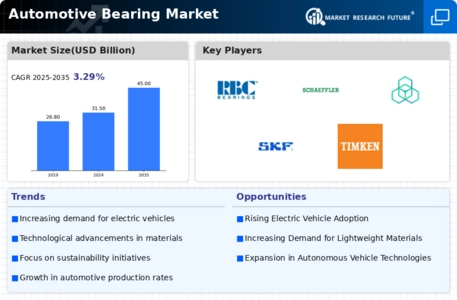
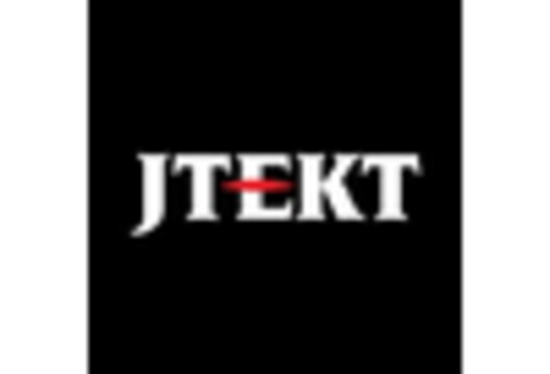
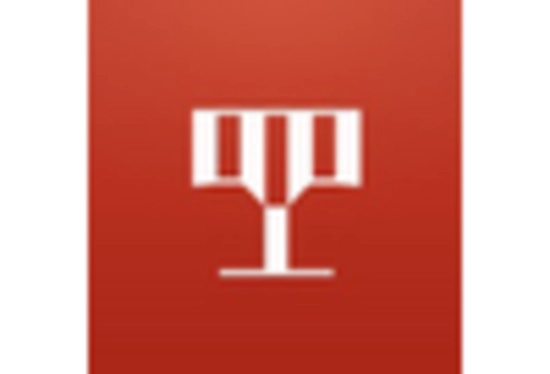
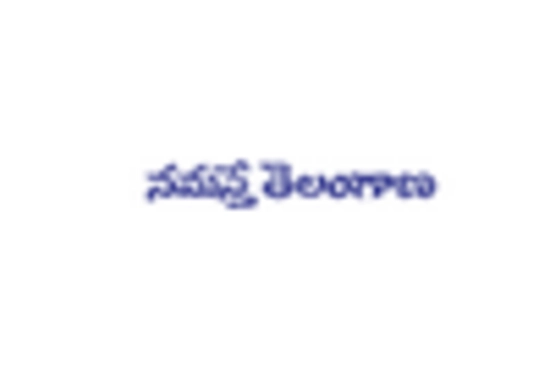
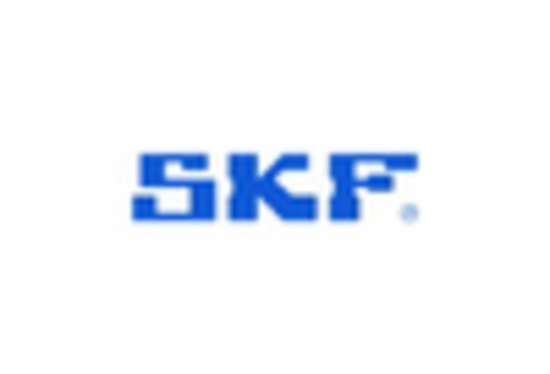
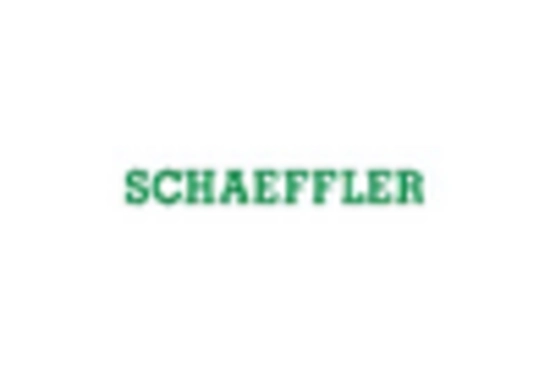
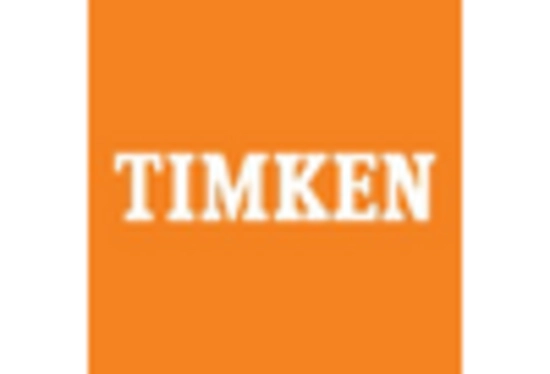

Leave a Comment